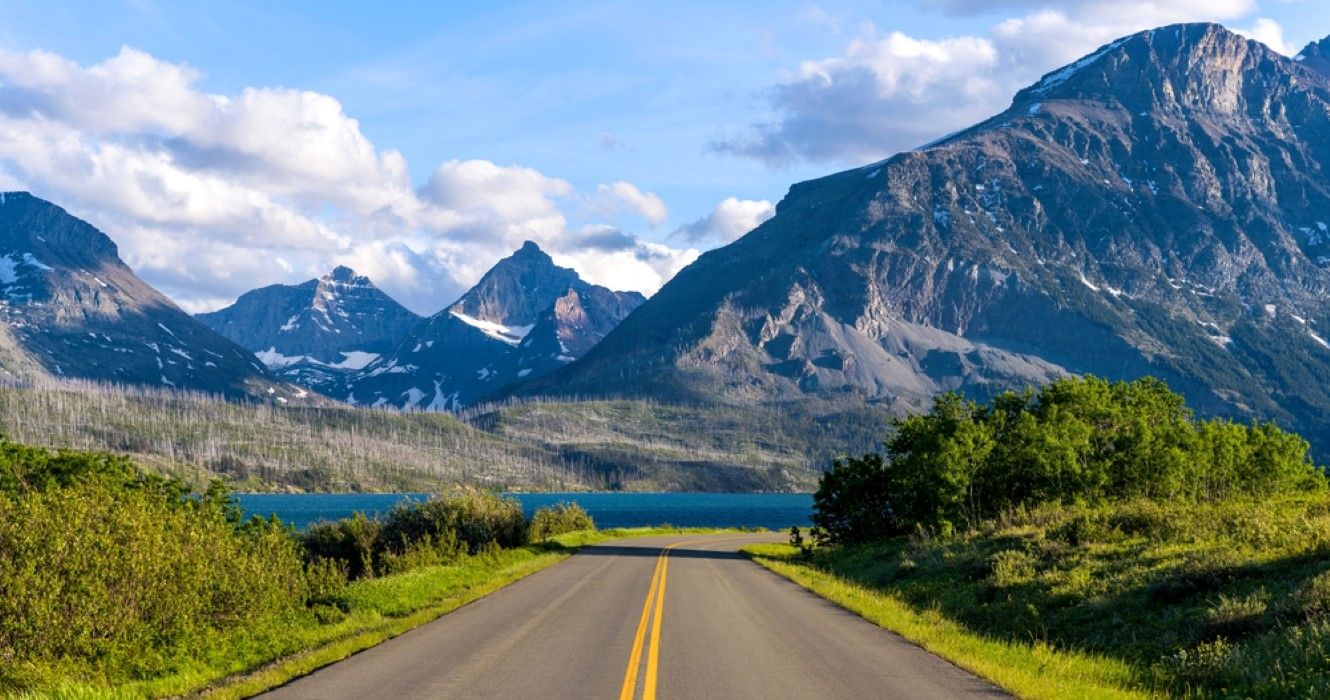Quick Links
There are road trips, and then there is the Going-To-The-Sun Road drive. This road is nothing like the ordinary. It is a 50-mile stretch that takes a whopping two hours to complete. Why take all that time driving through such a short stretch? Well, this route is packaged differently, and so is the experience.
Going-To-The-Sun Road is both a historical and engineering landmark whose significance can never be downplayed. The multiple twists and turns of the road are part of the experience.
The following is a description of the Going-To-The-Sun Road and why it is difficult to navigate.
Going-To-The-Sun Road Description
Going-To-The-Sun Road is an engineering marvel constructed from 1921 to 1932. The 11-year wait for the completion of the road was worth it, after all. It has since stood to be one of the most pronounced civil engineering landmarks in the U.S.
But what’s the real story behind this road? Well, the road was inspired by the need to make Glacier National Park more accessible by road. The road was constructed mainly using natural materials with minimal destruction to the environment. After all, it was meant to blend with its immediate environment, a billing it has lived up to.
The name of the road is derived from a nearby mountain going by the same name. The road has received multiple accolades both locally and internationally and has helped put Montana on the global map. Going-To-The-Sun Road isn’t just any other 50-mile route. It is an experience best suited for adrenaline junkies. The road is extremely narrow, with sharp bends that call for caution from the driver’s side.
The road is two-way, with some ends being too narrow. Also, the route is frequented by cyclists who depend on the same narrow path. Caution is therefore advised for a successful adventure around this road.
- Road Length: 55 Miles
- Travel Time: Two Hours
Going-To-The-Sun Road Safety Tips
Thanks to its immediate landscape, driving through this road can be hectic. From the narrow stretches to the high traffic of the area, caution is an understatement here. The two hours required to navigate through the stretch show how difficult it can be.
Follow The Stipulated Speed Limits
Just like it happens on major roads and highways, this road has a set of rules meant to instill sanity. The speed limit is a crucial component of the safety package when touring this part of the world. On the lower elevations, the speed limit is capped at 45 miles per hour. The alpine section, which is more difficult to navigate, is capped at 25 miles.
All along the road are important signs indicating the particular sections where the specific speed limits are to be applied. Vacationers should expect numbers lower than 25 miles, especially during peak seasons when there is a traffic snarl-up.
Beware Of Cyclists
Being a two-way road with a large part of the sections being narrow, motorists are encouraged to exercise caution on the road. Roads are never a preserve for cars alone, and Going-To-The-Sun Road is no exception. If anything, it is here where the rules of the road need to be applied more.
With no designated paths for cyclists, motorists must learn to share the available space with them. During the warmer months, the road sees an increase in the number of cyclists, which calls for more caution from the driver's side.
Not All Cars Are Allowed
The road has specific guidelines outlining the kind of vehicles that check in. Due to the multiple sharp corners on the road, not all vehicles can pass through safely. Rules of the game here dictate that cars must be less than 21 feet long to be allowed in. Cars should not exceed eight feet in width and 10 feet in height. Compact cars are the best bet here.
- Length: 21 Feet
- Height: 10 Feet
- Width: 8 Feet
What To Look Out For
Going-To-The-Sun Road offers more than just a thrilling ride. The scenic views throughout the 55-mile stretch are worth it.
Wildlife
Wildlife is a key component of the Going-To-The-Sun Road experience that vacationers cannot afford to miss. Thanks to the surrounding mountains, mountain animals such as mountain goats, wolves, and lions are not hard to find. Bears are also easy to spot, so vacationers are advised to keep their distance for safety reasons.
Lake McDonald
Lake McDonald's is by far one of the most noticeable features when approaching the drive from the west. Stopping around this lake allows vacationers to soak up Montana’s scorching sun during summer. The lake has small beautiful beaches where vacationers go to cool off as they prepare for the ride ahead.
The Weeping Wall
The weeping wall consists of a 100-foot face of a rock with snowmelt running through it. This wall spits water into the highway, making it a good spot to cool off when it is hot. Summer is the best time to experience the weeping wall at its best.
Road trips in Montana are a fun-filled experience, with the Going-To-The-Sun Road being a crucial part of the experience. While two hours is the standard time it takes to move to the top, vacationers can hardly resist the temptation to stick around a bit longer. While at it, road safety is something vacationers cannot afford to compromise.

